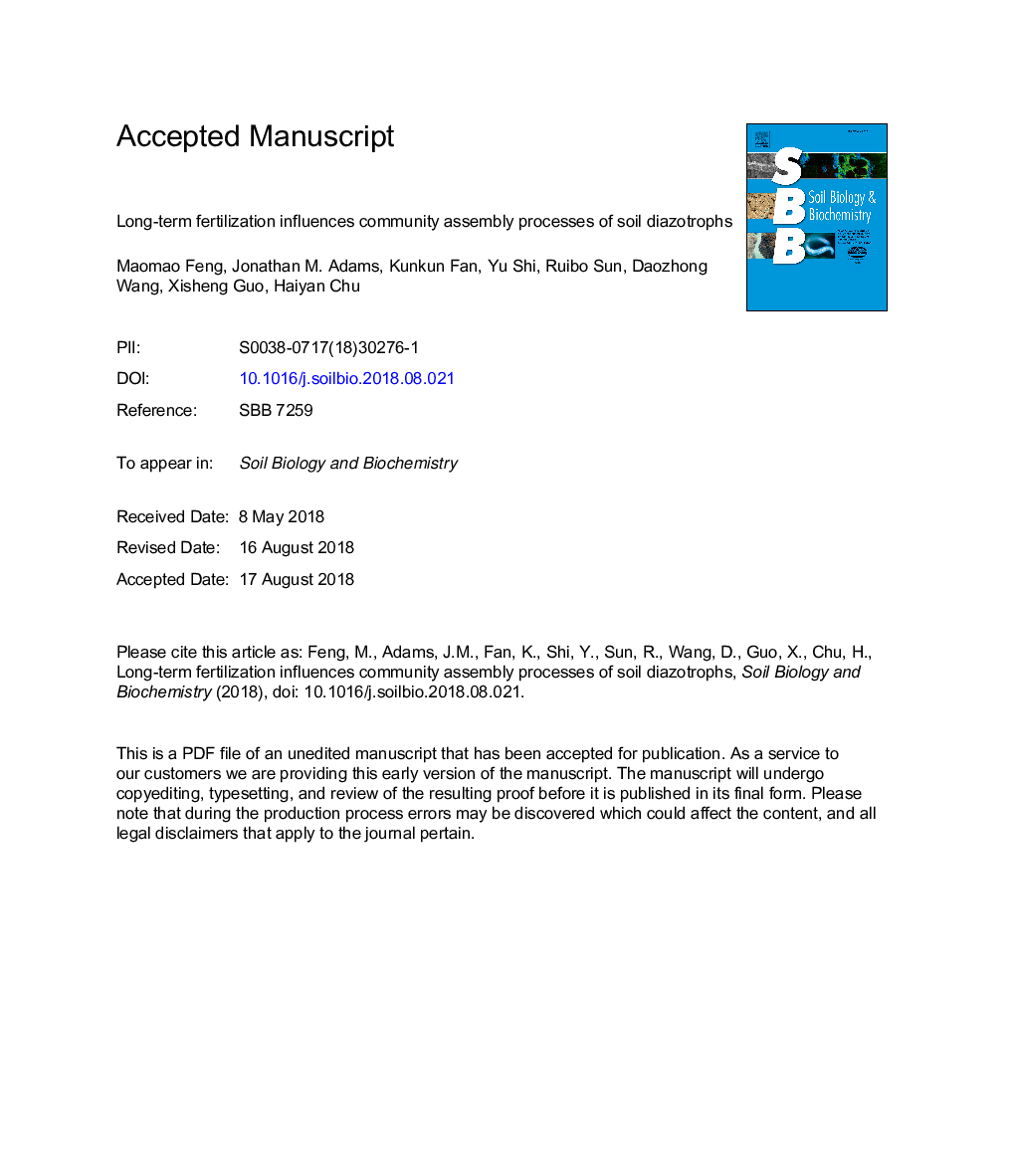| Article ID | Journal | Published Year | Pages | File Type |
|---|---|---|---|---|
| 9954266 | Soil Biology and Biochemistry | 2018 | 40 Pages |
Abstract
Unraveling the drivers of microbial community variation in response to different environmental conditions is a major goal in ecology. Although diazotrophs play a dominant role in global biological nitrogen (N2) fixation, the controls on soil diazotrophic community assembly are not fully understood. In this study, we investigated soil diazotrophic communities in field plots that received long-term (30 years) fertilization treatments with Illumina MiSeq sequencing. Long-term chemical fertilization significantly changed soil diazotrophic community structure and resulted in the decrease of diazotrophic diversity, while the addition of livestock manure could maintain the diversity. Diazotrophic community structure and diversity were mostly correlated with soil pH. Deterministic processes structured diazotrophic communities in both unfertilized and fertilized soils. However, the deterministic selection on phylogenetically non-conserved traits increased phylogenetic randomness in all fertilized treatments. These trends for diazotrophs differed from those for the entire bacterial community, which was structured through deterministic processes and exhibited phylogenetic nonrandomness in unfertilized and fertilized soils. Taken together, our results indicated that long-term fertilization strongly affected the diversity, community structure and assembly processes of soil diazotrophs, which may have implications for the rate of biological N2 fixation in agricultural systems.
Related Topics
Life Sciences
Agricultural and Biological Sciences
Soil Science
Authors
Maomao Feng, Jonathan M. Adams, Kunkun Fan, Yu Shi, Ruibo Sun, Daozhong Wang, Xisheng Guo, Haiyan Chu,
